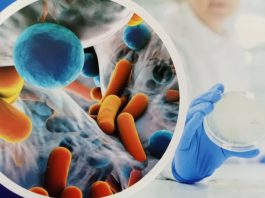Antibiotic resistance is an escalating global crisis, compromising our ability to treat bacterial infections effectively.
The overuse and misuse of antibiotics in healthcare and agriculture accelerate this issue, allowing bacteria to evolve defences against these life-saving drugs.
A key driver of this resistance is the transfer of antibiotic resistance genes (ARGs) between bacteria, which can spread through environmental sources such as wastewater.
The World Health Organization (WHO) has identified antibiotic resistance as one of the top public health threats of the 21st century. As bacteria become resistant to commonly used antibiotics, once-treatable infections may turn deadly.
The need for robust surveillance methods to track the spread of ARGs is more urgent than ever. To combat this growing concern, researchers at the Carl R. Woese Institute for Genomic Biology have developed a CRISPR-enriched metagenomics technique.
This innovative method significantly improves the detection of antibiotic resistance genes in wastewater, providing valuable insights into the spread of resistance in communities.
Wastewater: A hotspot for antibiotic resistance genes
ARGs are found in various environments, including hospitals, farms, and sewage systems. Wastewater, in particular, serves as a reservoir for these genes, mixing human, bacterial, and viral DNA.
As wastewater travels through urban and rural areas, it collects genetic material from multiple sources, making it a prime location for ARGs to spread.
The challenge lies in effectively identifying antibiotic resistance genes within these complex genetic mixtures, as they make up less than 1% of the total DNA present in samples.
Traditional detection methods, such as quantitative polymerase chain reaction (qPCR), have been widely used to identify known ARGs. However, this approach is time-consuming and limited to pre-selected gene sequences, leaving a significant portion of genetic material unexamined.
qPCR is highly sensitive but requires the design and validation of specific primers, a process that can be labour-intensive. Metagenomics offers a broader analysis by sequencing all DNA fragments in a sample, but its sensitivity remains a challenge due to the overwhelming presence of non-ARG DNA.
A CRISPR-powered breakthrough
To overcome these limitations, researchers integrated the CRISPR-Cas9 system into metagenomic analysis. Unlike conventional methods that randomly fragment DNA, CRISPR-Cas9 selectively targets and cuts ARG-containing sequences.
The team designed 6,010 guide RNAs capable of binding to ARG sites, ensuring a more precise and efficient fragmentation process. This targeted approach drastically increases the chances of detecting antibiotic resistance genes within wastewater samples.
By enriching ARG fragments before sequencing, this method significantly increases detection rates. Compared to standard metagenomics, the CRISPR-enhanced approach lowers the detection threshold by an order of magnitude, from 10⁻⁴ to 10⁻⁵.
This advancement enabled the identification of 1,189 additional ARGs and 61 previously undetected ARG families in wastewater samples.
The increased sensitivity means that even ARGs present in very low concentrations can now be detected, providing a more comprehensive view of antibiotic resistance in a given community.
Implications for public health and future research
Detecting ARGs in wastewater offers critical insights for public health officials and medical professionals.
By monitoring resistance genes in sewage systems, authorities can anticipate emerging threats and implement timely interventions. Early detection allows for better-informed decisions regarding antibiotic prescription guidelines and infection control measures.
Furthermore, the ability to track ARGs in wastewater can help researchers understand how resistance spreads between different bacterial species.
The findings from this study suggest that wastewater surveillance could serve as an early warning system for potential outbreaks of resistant infections.
This could be particularly valuable in hospitals and healthcare settings, where antibiotic-resistant infections pose a significant risk to vulnerable patients.
Looking ahead, researchers plan to extend their CRISPR-based method to other environmental samples, expanding its applications beyond wastewater.
This pioneering approach marks a significant step toward enhancing ARG surveillance, ultimately aiding efforts to mitigate the spread of antibiotic resistance.
By leveraging advanced genetic tools like CRISPR, researchers are not only improving detection capabilities but also laying the foundation for future strategies to combat this pressing global health issue.









